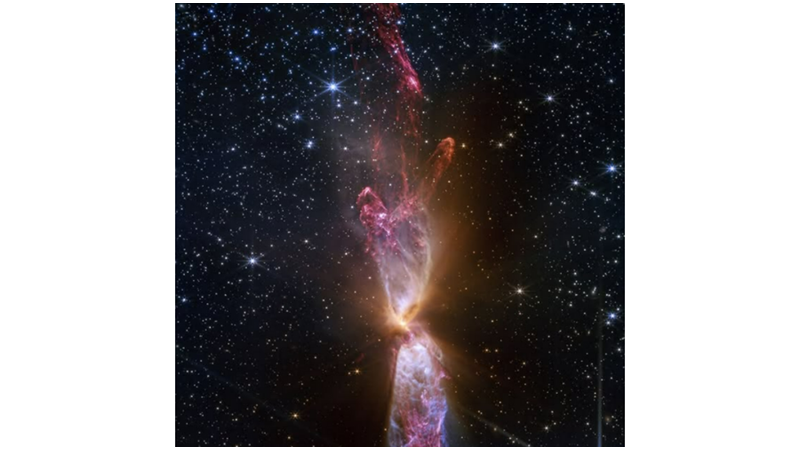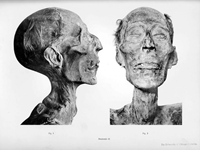An actively forming double star is responsible for the formation of this luminescent hourglass. NASA's Webb telescope observes near-infrared light to reveal the extraordinary detail and structure in Lynds 483 (L483). The two protostars are located in the center of an hourglass shape and are scattering gas and dust around them. The collision of new cosmic material with pre-existing ones creates density differences, creating the luminescent folds and twist-like structures seen in this image. There are also dark “gaps”, like the left-hand side of the bottom of the hourglass, where stars emit no light. In these regions, the dust density is so high that very little light can pass through. Even the Webb telescope, designed to observe the internal structures of gas and dust, can only detect background stars as faint points of light. Above and below the flat disk at the center of the hourglass, the dust layer is thinner, allowing light from the stars to pass through and forming the large, translucent orange cones that define the hourglass shape.
Millions of years from now, when these stars have finished evolving and cleared out their surroundings, each one could be as massive as our Sun. All that may be left is a small disk of gas and dust where planets can eventually form.
Image credits: NASA, ESA, CSA, STScI


 Nielawore
Nielawore









Yorumlar
nice
Yorum yazmak için lütfen giriş yapınız